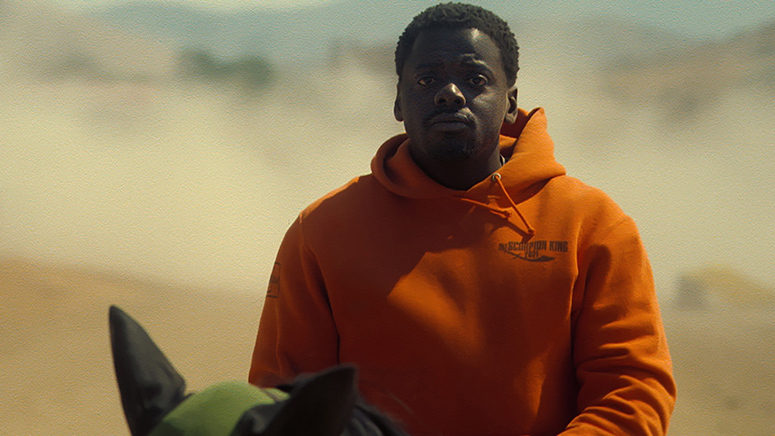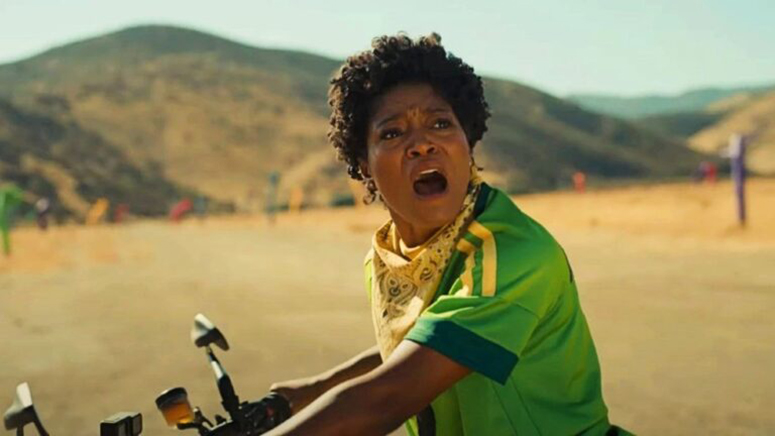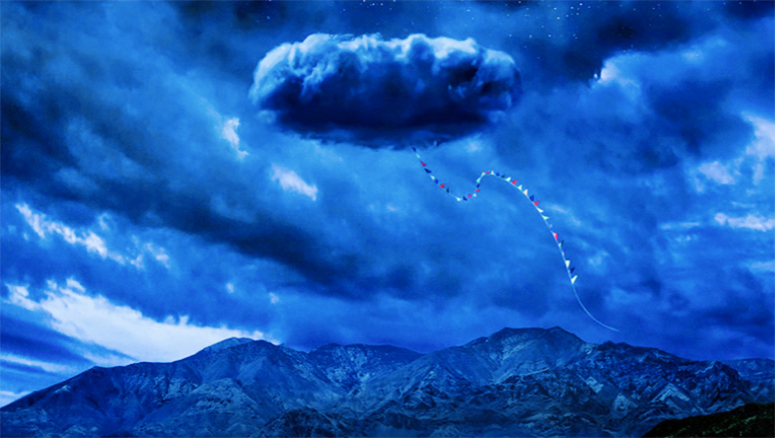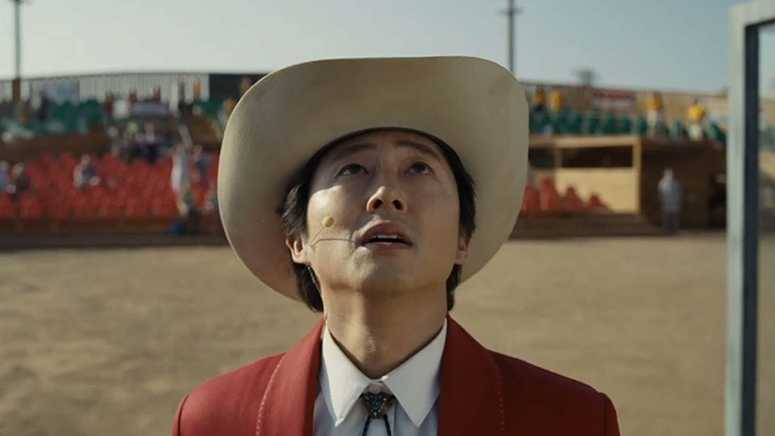Close encounters of the Jordan Peele kind
A crazed chimp in a party hat. An alien remix of Corey Hart’s Sunglasses at Night. A large hovering object that looks, from certain angles, like an enormous 1O-gallon hat. Daniel Kaluuya on a horse.
Will you know exactly what’s coming next in Jordan Peele’s latest cinematic deconstruction of the horror genre?
Nope.
And that ability to subvert expectations takes some serious skin in the game. So far, Peele has written and directed three unique twists on classic horror tropes — first Get Out, then Us, and now Nope — all told through the eyes of Black characters. All visually searing and memorable.

This time, he injects science fiction into the mix. Like one of his inspirations, M. Night Shymalan (he cites Signs as a peg while writing Nope), Peele has plenty of clever ideas and twists in store. He’s as devoted to character as Shymalan is (well, was; his recent Old was as two-dimensional as a late-period Outer Limits episode). And he really is a master at building mood: there are moments in Nope that will make the tiny hairs at the back of your neck stand on end.
We open on the Haywood’s Hollywood Horses ranch, deep in a California desert outside Los Angeles. Brother and sister OJ (Daniel Kaluuya) and Emerald (Keke Palmer) take over after a freak accident in which their father is killed. The Haywoods, we’re told, have been wrangling horses for the movies since their great-great-granddaddy rode one in the very first frames of cinematic celluloid ever shot (test footage called “Animal Locomotion” featuring a Black jockey on a horse).
Nope is thoroughly unique and thoroughly enjoyable. Peele says he wrote it during the lockdown, a period when he was worried about the future of cinema in the face of a deadly pandemic. He felt there was an “endless cycle of grim, inescapable tragedy” as well as an endless addiction to “spectacle” that was enveloping the world.
But the ranch has fallen on hard times, and OJ and Keke are tempted to sell the property to a rival rancher and former child actor Ricky “Jupiter” Park (Steven Yeun from Minari and Walking Dead).

But weird occurrences — stranger, even, than the shower of objects like car keys and nickels that periodically fall from the sky near Haywood ranch — cause OJ and Keke to take a closer look. They think something’s up there. “We need to get that Oprah shot,” Keke announces, meaning photographic evidence that will overwhelmingly convince the world of what they’re seeing.
Nope is thoroughly unique and thoroughly enjoyable. Peele says he wrote it during the lockdown, a period when he was worried about the future of cinema in the face of a deadly pandemic. He felt there was an “endless cycle of grim, inescapable tragedy” as well as an endless addiction to “spectacle” that was enveloping the world. People seemed powerless to look away. He decided he would create a spectacle that would draw audiences back to the cinema.
There are shades of Close Encounters of the Third Kind here, and Signs, but also King Kong, Jurassic Park, The Wizard of Oz, and (I would argue) references to 2001: A Space Odyssey.

The opening frames bring us back to a ’90s sitcom TV set where tragedy has unfolded: Gordy, a movie chimp, has run amok. He’s covered in blood. We see the aftermath from a low angle, a gauzy shot that turns sinister when Gordy whips his head our way.
Nope, on some levels, is about interspecies contact (also hinting at 2001), and there’s a moment that tells us this is possible, but maybe not always advisable (that touching near-fist bump). Peele also riffs on the recent US Navy footage of “UAPs” (unidentified aerial phenomena), which is the military’s new name for UFOs. Why, we wonder, with all the available technology out there and all the cellphones aimed at the skies, do we never get anything but grainy footage of flying saucers?
With these concerns in mind, Nope draws us into a home-invasion scenario played out in one of the spookiest desert ranch settings you could imagine. The frequent negative refrain from OJ and Keke whenever they’re about to walk down dark hallways (“Nope!”) tells us they’re not falling for obvious horror tropes (and traps) with their eyes closed.

There’s so much to like here on a purely cinematic level — from the lush cinematography by Hoyte van Hoytema that’s made for the big screen, to the eerie score and sound design by frequent collaborator Michael Ables, to the look of the UAPs, which harks back to anime Neon Genesis Evangelion and Biblical depictions of angels.
Plus Kaluuya and Palmer make a great team, with sibling banter that feels real and lived-in, not penned by a scriptwriter. OJ is cool and shut down, while Keke is a motormouth. They first enlist an electronics store installer to help them monitor the skies (Brandon Parea), then hire a more seasoned documentary maker (Michael Wincott) to get the footage. It turns into an extended home-under-siege climax that does feel like Signs at times as they try to map out their next moves. (Also like Signs: the buildup to that climax is sometimes sloggy.)
And then there’s the matter of race. Peele always approaches the subject through his own lens, but here he injects a larger theme of exploitation (just as he injected the sub-theme of the underclass in Us). Race is evident from the double-take OJ gets on a movie set when he says his name out loud (it actually stands for “Otis Jr.”), but this is swallowed up by the larger theme of systems of child exploitation (the child actor played by Yeun), economic exploitation (everyone, including TMZ, trying desperately to profit off the next available spectacle), the exploitation of horses and primates, even down to the possible exploitation of our planet by extraterrestrial life watching our every move.
Peele is smart to open up his latest cinematic gambit to the skies (just as Tom Cruise did with the recent Top Gun: Maverick, incidentally). It brings back some of the mystery and magic of cinema at a time when our expectations have been boxed in by small viewing screens.
And incidentally, it’s worth noting that Peele continues to create separate, new stories in a time when we are overwhelmed by the spectacle of big-budget sequel franchises.
So, is it worth braving the traffic and possible COVID resurgence to see Nope on a big screen? Yup.
* * *
Nope is released through Universal Pictures and is now showing in cinemas.



